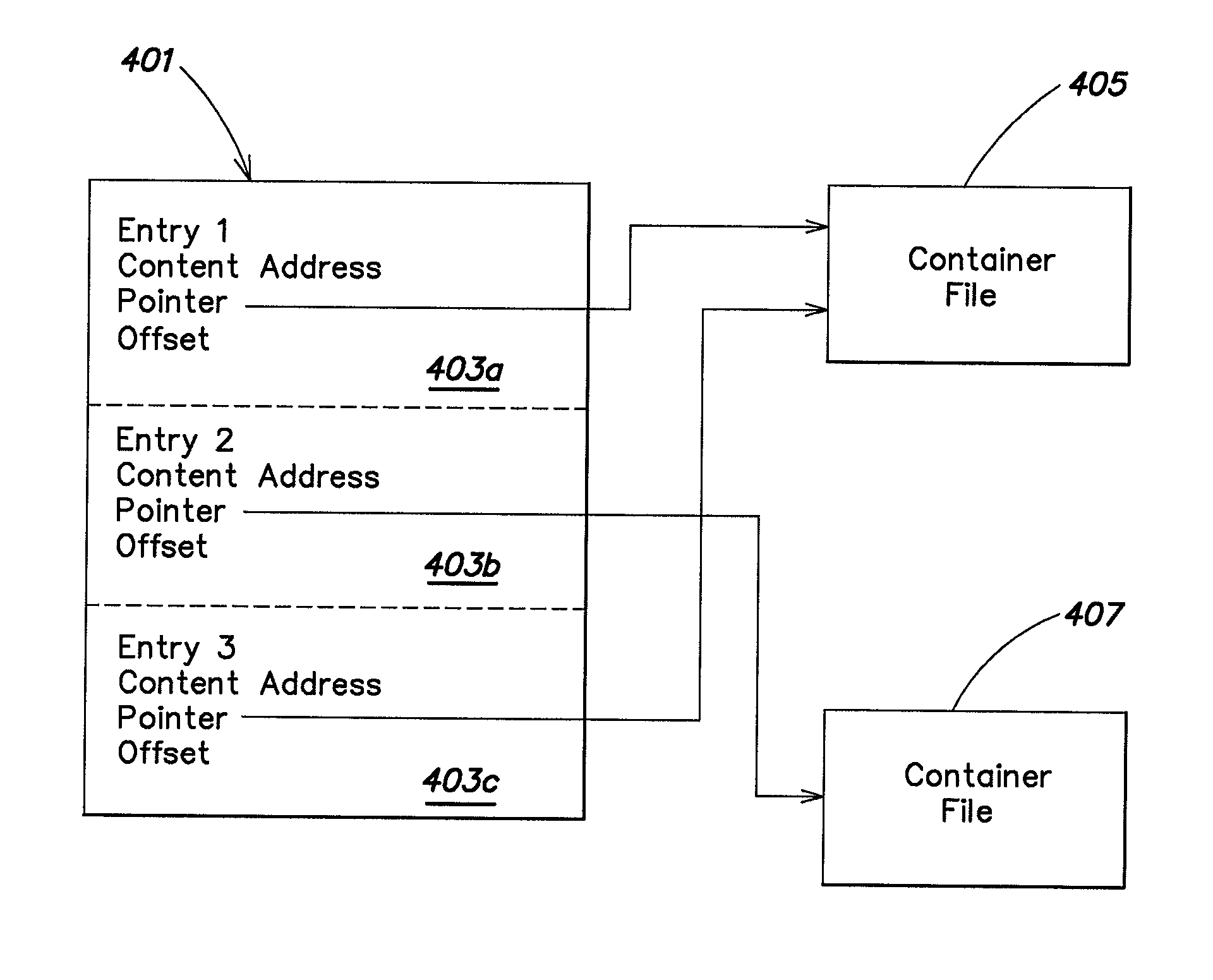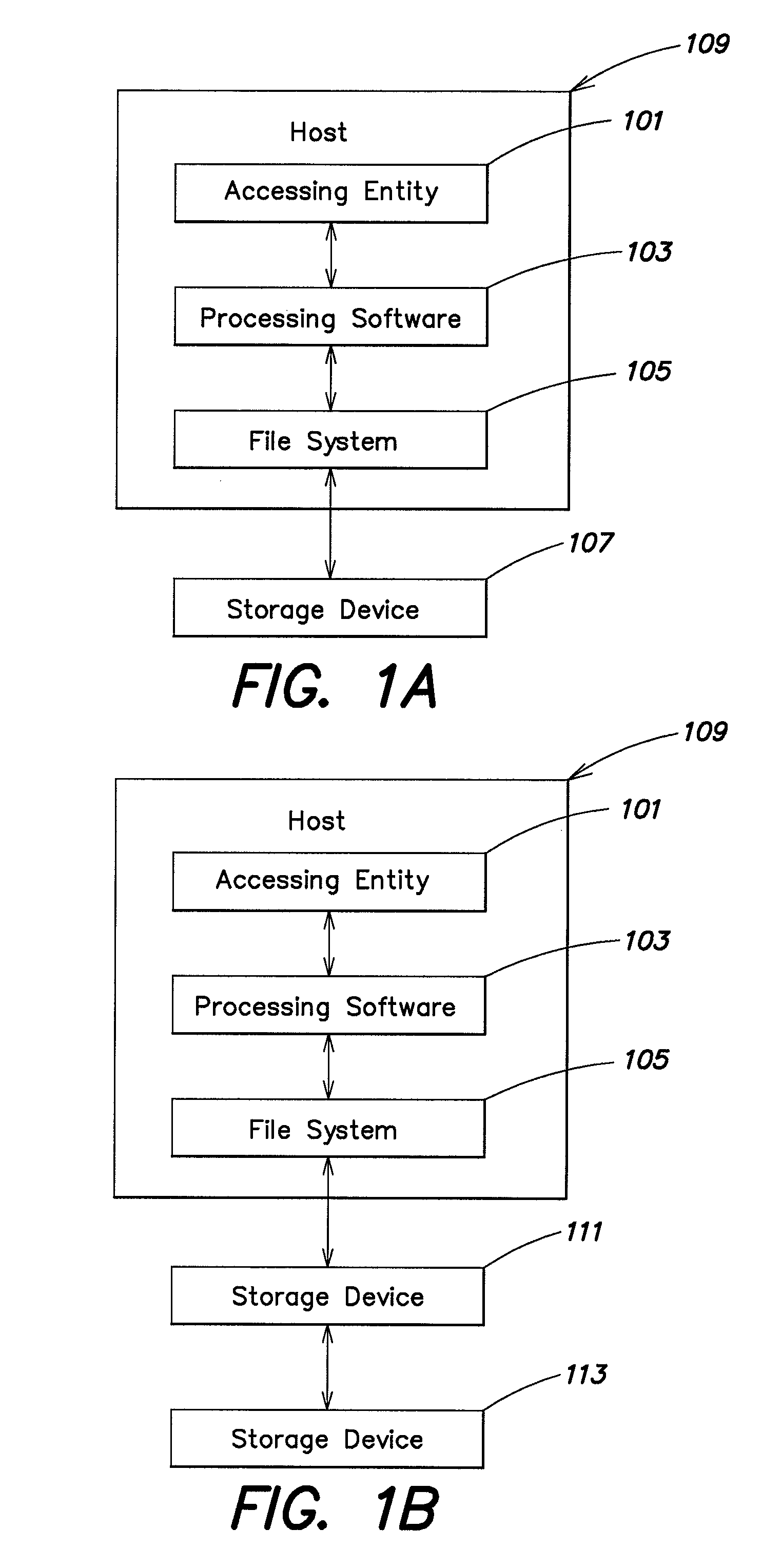Methods and apparatus for managing the storage of content in a file system
a file system and content technology, applied in the field of content management, can solve the problem of significant decrease in the performance of the file system
- Summary
- Abstract
- Description
- Claims
- Application Information
AI Technical Summary
Benefits of technology
Problems solved by technology
Method used
Image
Examples
Embodiment Construction
[0020]Applicants have appreciated that, in some situations, a file system-imposed limit on the number of files may be too restrictive to store all the desired data and it may thus be desired to store the data in the file system in a manner that does not violate the limit.
[0021]Thus, one embodiment of the invention is directed to containerization of logically distinct content units, so that multiple distinct content units can be stored in the same file. Content units that are logically distinct typically are stored in separate files in a file system. For example, each document that is created by a word processing application usually is stored in a separate file because these documents are logically separate from each other. However, in one embodiment of the invention content units that are logically separate may be containerized. That is, two or more content units that are logically separate may be stored in a single file, called a container file, in the file system. In one embodimen...
PUM
 Login to View More
Login to View More Abstract
Description
Claims
Application Information
 Login to View More
Login to View More - R&D
- Intellectual Property
- Life Sciences
- Materials
- Tech Scout
- Unparalleled Data Quality
- Higher Quality Content
- 60% Fewer Hallucinations
Browse by: Latest US Patents, China's latest patents, Technical Efficacy Thesaurus, Application Domain, Technology Topic, Popular Technical Reports.
© 2025 PatSnap. All rights reserved.Legal|Privacy policy|Modern Slavery Act Transparency Statement|Sitemap|About US| Contact US: help@patsnap.com



